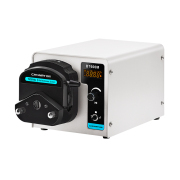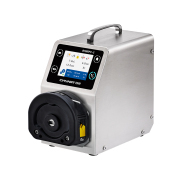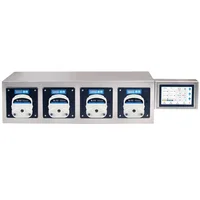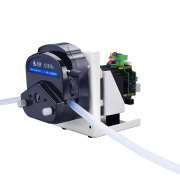Chonry Peristaltic Pump
What Is a Peristaltic Pump?
What Is a Peristaltic Pump?
The peristaltic pump, also known as roller pump, is a positive displacement pump that moves liquids through a fluid-filled flexible tube inside a circular pump casing. These pumps usually work through rotary motion to move fluids. They are a popular choice for medical devices because they are easy to use and provide excellent patient safety. To find out more about peristaltic pumps, read this article. It is sure to help you make the best decision for your medical needs.
A peristaltic pump is extremely easy to maintain and repair. The only component that wears out is the flexible tube. This tube is usually replaceable without having to disassemble the pump. Moreover, most pumps come with a built-in inverter, which allows for local speed control and reversibility. Peristaltic pumps are suitable for liquids with a light viscosity. They have many other advantages over other types of pumps.
Peristaltic pumps are commonly used for delivering materials such as cement mortar, ceramic glaze slurry, refractory fiber pulp, paint, coatings, and waste. Peristaltic pumps are also very accurate and can generate 99% accuracy in continuous dosing. Since they do not stop at the same position, the flow rate of these pumps is largely dependent on the flow rate. For this reason, peristaltic pumps have capacities measured in milliliters per revolution.
The rotor pump compresses a tube filled with fluid and moves it from the inlet to the outlet. It is a versatile pump that can handle higher pressures. Their casings are lubricant-filled to prevent abrasion to the internal tube. In addition, EPDM and NBR are suitable for pumping hot fluids. Despite their simplicity, they can also withstand the high pressures in various medical applications.
The lifespan of a peristaltic pump depends on many factors, including the amount of liquid the device moves and the speed of the pump. Peristaltic pumps are also very versatile, with flow rates ranging from 0.3 to 20 gallons per day. Furthermore, they are easy to customize depending on the flow rate. For example, a peristaltic pump can be used to transfer fluids from fish tanks to a septic system.
Chemical compatibility is another factor to consider when choosing a peristaltic pump. Non-elastomeric polymers are not suitable, as they are more vulnerable to abrasion. Fluoroelastomer, PVC, and TPV tubing are all good options, but they come with a high initial cost. The initial cost of a peristaltic pump is justified when compared to the value it provides the patient.
One of the biggest benefits of peristaltic pumps is their ability to remove trapped gasses from liquids. In this way, they can pump both liquid and gas without losing their prime. A diaphragm pump needs metal spring-loaded valves to avoid siphoning. These pumps are particularly effective when it comes to pumping gases. However, this pump has one drawback. They may lose their prime when the gasses build up.
0users like this.







